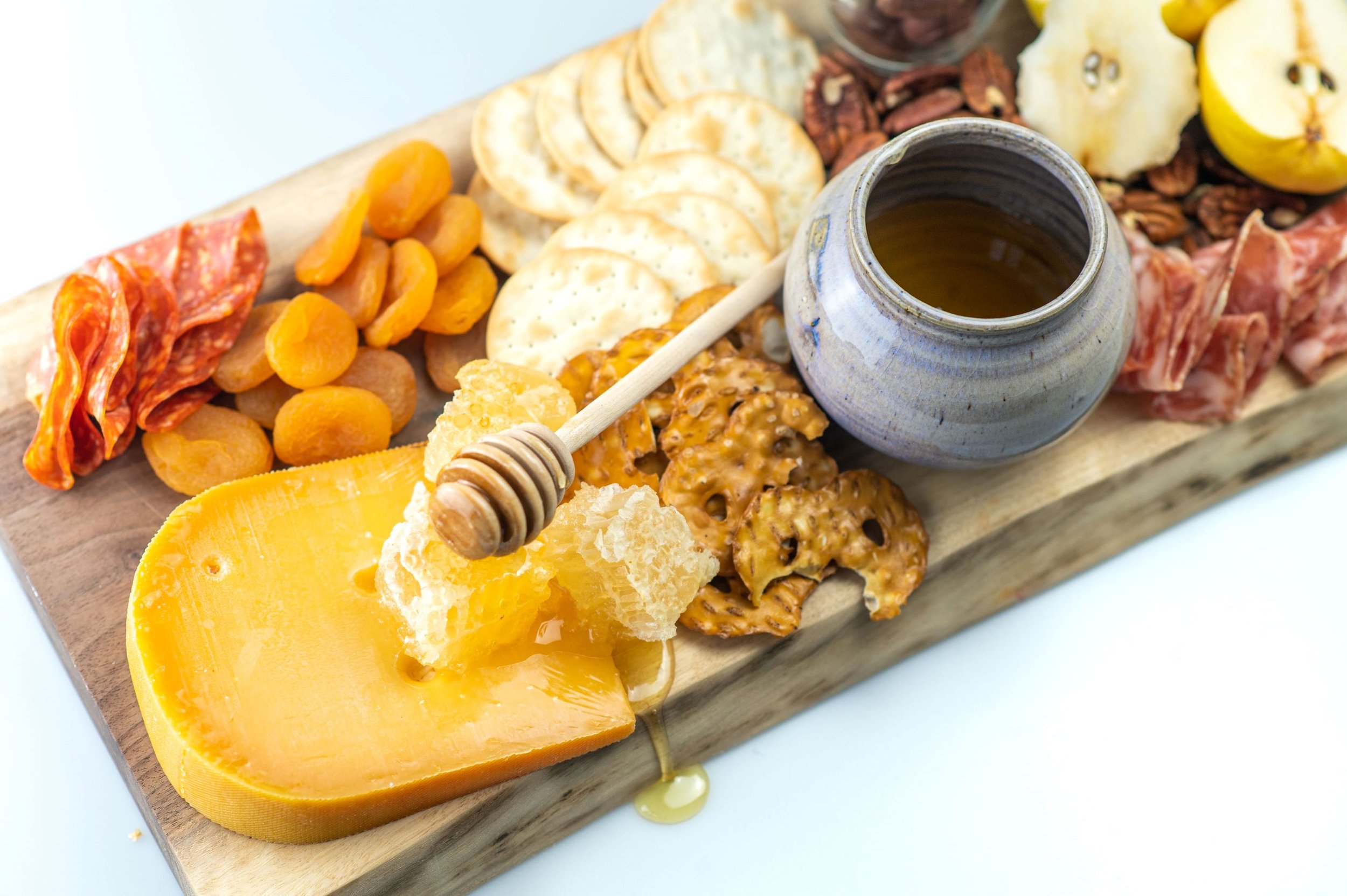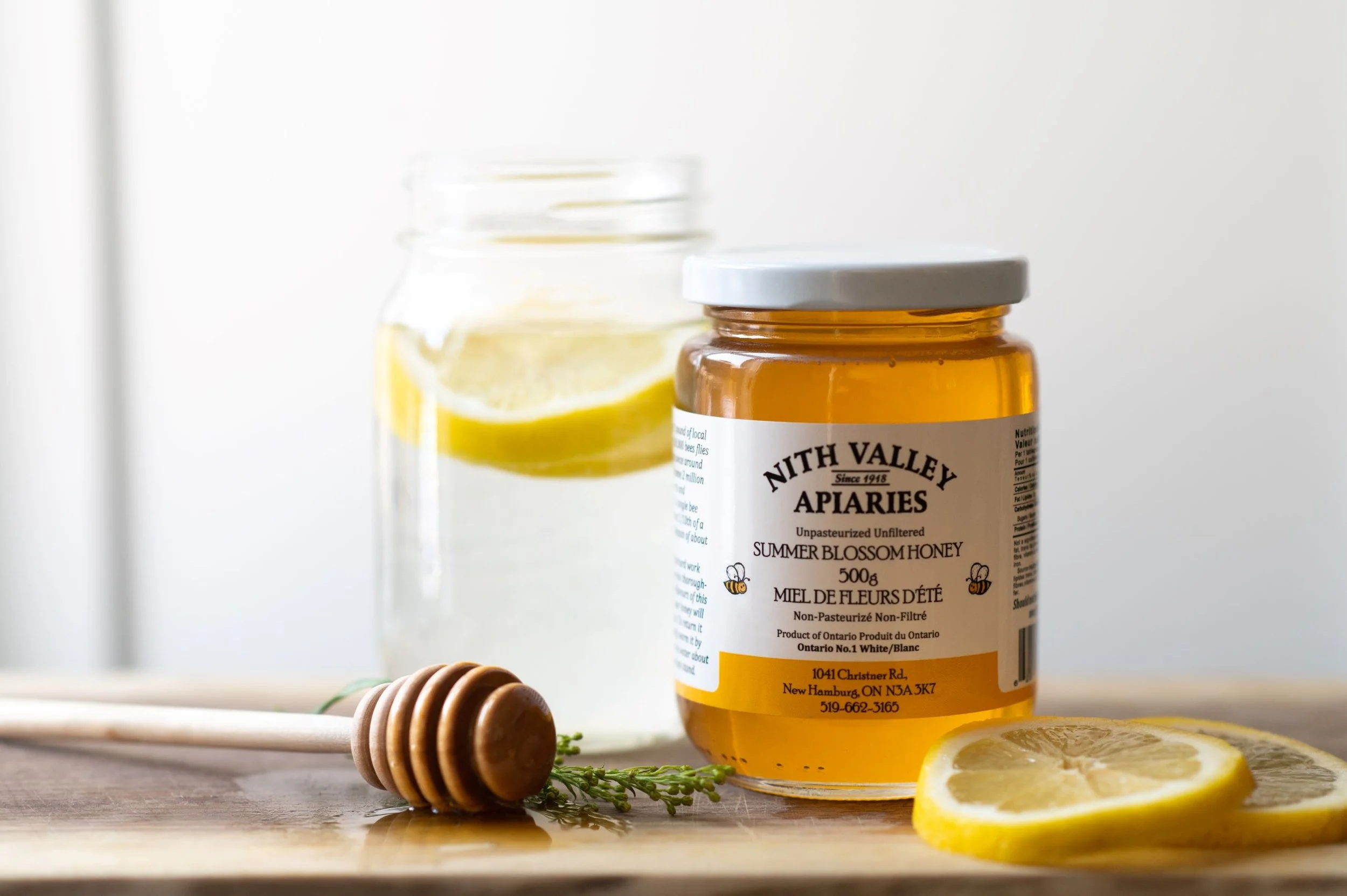
Nith Valley Apiaries
A Legacy of Bees and Family
The hum of honeybees has been a constant at Nith Valley Apiaries for over a century. First established in 1918 by Harvey Gampp beside his church in rural Ontario, the apiary passed from one beekeeper to the next, each learning from the last, and each putting their own stamp on the business.
Today, it’s Mike and Erika who carry the torch. Mike first got hooked at sixteen when he caught a wild swarm. That spark led him to apprentice with the beekeeper at his family’s church, an experience that eventually led to him taking over the entire operation in 2012, becoming the fourth steward of the century-old apiary. Two years later, he purchased the property.
Erika entered the picture a year later. The two married in 2016 and now raise their three young boys on the farm. “We pictured raising a family while working from home, serving our community, and being stewards of our surroundings,” Erika reflects.
Together with Mike’s sister Jodi, they’ve nurtured both the bees and the brand into something vibrant and community-rooted. Now, a dedicated team helps continue those values. “It really does take a village,” Erika says, “especially with three little ones running around.”
Farming in Partnership
Though the family keeps a few hives at home, and one for visitor observation, the heart of the apiary lies across nearly 30 local farms within a 40km radius of the honey house, where bee yards - clusters of 18 to 30 hives - are placed to access foraging grounds. “It’s a mutual relationship,” Erika explains. “The farmers reach out to us, and we provide the bees. At the end of the season, they receive honey as rent.”
Each yard is carefully spaced about five kilometres apart to prevent overlapping and ensure the bees have ample range. A single hive will cover a foraging radius of about 7,000 acres, or a 3-kilometre radius, collecting nectar and pollen to support the colony and packing it away in the extra boxes for the beekeeper to harvest.
Mike now manages close to 800 colonies, rotating through all 30 yards on a 9-to-14-day schedule. Each visit is an opportunity to tend to the hives' needs; provide more space, equalize the hives, monitor brood health, and ensure conditions are stable for honey production. “It’s a lot of ground to cover,” Erika says, “but the bees know what they’re doing. Our job is to support them.”
History and Change
The honey house itself has changed over the decades, most recently during COVID renovations that reworked the building’s layout. Traces of its history linger, however. Some older customers will bring in their original honey tins to refill. “We want to keep that tradition alive,” Erika says. “Especially for the kids who visit- there’s something magical about seeing honey come straight from the tap.”
Their hives benefit from diverse forage in the region, but it’s also not what they used to be. Fence rows are gone. Hay is cut sooner and often before bloom. Farmland is increasingly replaced by housing and industry. “The bees are struggling,” Erika says. When there is a break in the bloom season, the nectar flow dries up, and the bees survive on what they’ve stored away. Depending on the timing in the season, sometimes they’re going backwards and need additional feeding.
Choosing Local Every Time
Despite the challenges, the Apiary remains rooted in simple values: good stewardship, thoughtful sourcing, and a deep respect for the land and community. Their creamed and flavoured honeys are made from organic and often hyper-local ingredients. Erika sources strawberries from her childhood farm just down the road, dehydrates and pulverizes them, and blends them into the honey by hand.
Other ingredients - ginger, elderberries, and cranberries - are sourced from local farms. “There’s a story in every flavour,” she says. “The huckleberry swamp honey, for example, is just like the first honey Mike ever harvested.”
Though they’re not currently active in environmental organizations, Erika is clear: “Sustainability starts with our own choices - how we listen, observe, and respond to our surroundings.”
The Honey House
For Mike & Erika, the apiary is as much about lifestyle as livelihood. They’re raising their boys with wild summers, full of outdoor play, exploration, and participating in deliveries and farm chores. “They’re watching people work hard. And they’re playing hard. That matters.”
The Apiary’s in-house store, the Honey House, has its doors open to the public all year round, selling many bee-related products. The store is what connects them most deeply to their community, as Erika says, “People love the cozy, homestead vibe. They leave with memories, not just honey.”
In 2018, their Centennial Honey Festival drew 700 visitors. After a fire destroyed their workshop just before Christmas 2023, the community showed up again with outreach, care, and practical support. “It reminded us that we’re not alone in this work,” Erika says.
Looking Ahead
With Mike in the bee yards and Erika in the honey house, the family runs a lean, transparent business. No flashy marketing, just word of mouth and dedication.
As they look to the future, they’re excited to connect more through initiatives like Taste the Countryside. “We’re not just selling honey,” Erika says. “We’re offering people a taste of place, a connection to the land, and a glimpse into a way of life that’s sweet in every sense.”
Find Nith Valley Apiaries on Instagram @ nithvalleyapiaries


